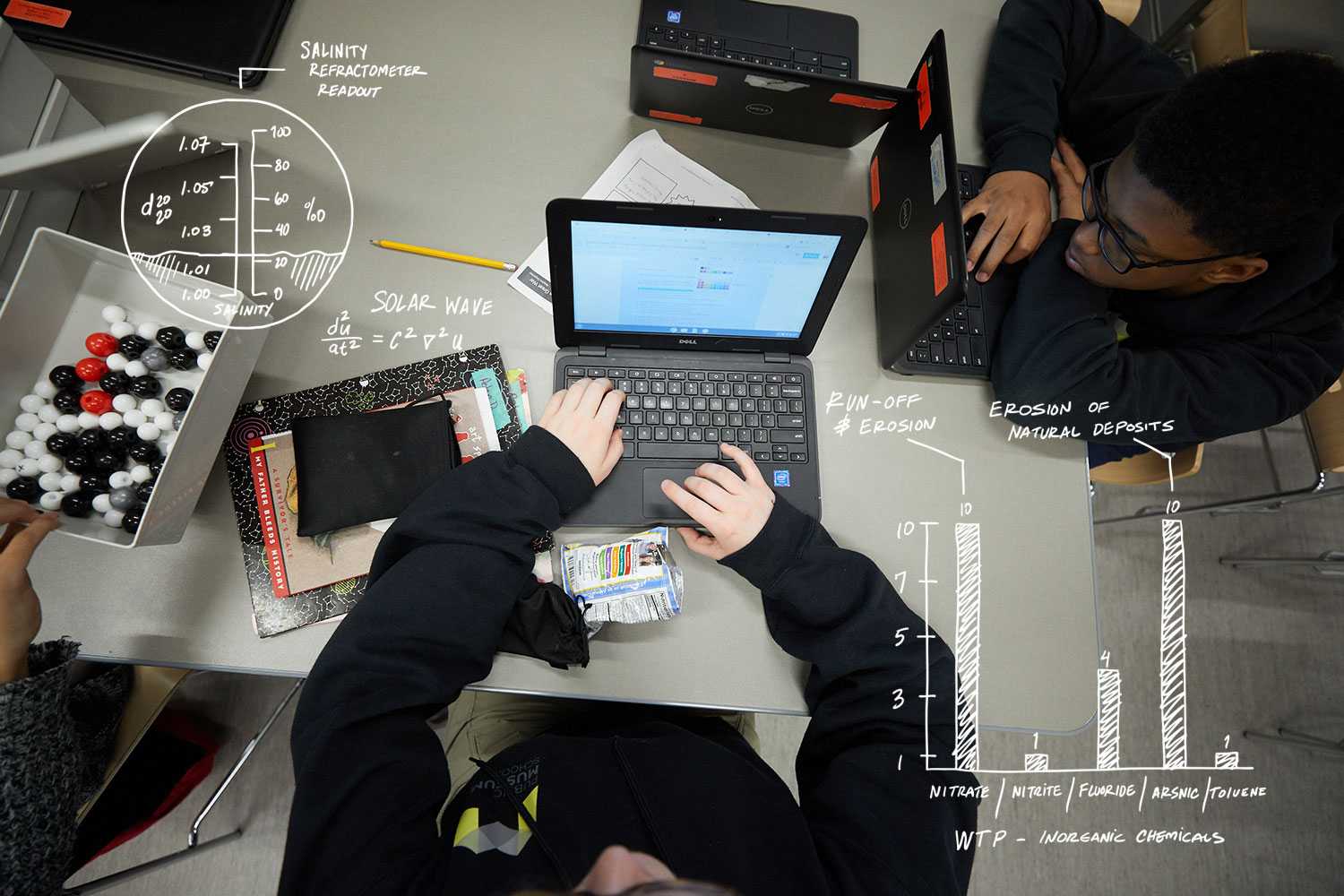2. Collaboration opens up new possibilities for learning.

Good high schools are portals to community assets and resources.


Fact:
17 states require districts or schools to partner with higher education to offer courses that allow students to earn college credit while still in high school. Does yours?
Source: Education Commission of the States
To achieve the best possible outcomes for students, schools need to expand the range of expertise and resources available to students and create new pathways to real-world, college-ready learning.
At Tiger Ventures, an XQ school in Endicott, New York, students work alongside local entrepreneurs in an incubator space that shares a building with the school. Up-and-coming businesses, artists, and organizations occupy the space rent-free; in exchange, they involve students in their work and coach students on their own projects.
Partnerships with higher education are another way to open up learning opportunities for students. In central Ohio, for example, Columbus State Community College leads a coalition of area colleges, employers, and school districts that’s dedicated to giving students the chance to earn free college credit while still in high school. Research shows that programs like these can improve college access, affordability, and success, particularly for low-income students.
Purdue Polytechnic High School in Indianapolis, Indiana, is the product of a partnership between Purdue University, business leaders, and industry partners. Instead of traditional courses, students at this XQ school take on real-world challenges, all carefully mapped to state standards. Students can earn college credits and in-demand industry credentials, advancing them on a pathway to social mobility and high-wage jobs—and qualified graduates will get direct admission to Purdue Polytechnic Institute. High school students also spend time on campus with Purdue Poly undergrads, where they get a first-hand taste of college life.
Dive Deep
![orange lockers]() Purdue Polytechnic High School
Purdue Polytechnic High SchoolHow does this STEM-focused school open up so many cool opportunities to its students? The answer is simple: partnerships—from the initial collaboration with Purdue University to dozens of partnerships with business and industry.
Explore![a student drawing]() Tiger Ventures
Tiger VenturesNBC News traveled to Endicott, NY, the birthplace of IBM, to get a closer look at Tiger Ventures, an XQ school, and its innovative incubator space.
Watch![a student looking forward]() College Credit in High School
College Credit in High SchoolThis report from Jobs for the Future shows how a community college in Ohio has worked with area school districts so high school students can earn college credit.
Read![a teacher smiling]() State Policies Matter
State Policies MatterState laws and regulations play a big role in whether students can enroll in college-level courses and how much tuition they might need to pay. Visit the Education Commission of the States to learn about your state.
Explore
Analyze
Connections with higher education can give students a tangible step up toward future success.
Step 1 – Research
Check with local colleges to see if they offer opportunities to earn college credit or credentials to high school students in your area. If you’re redesigning a school, does your school already offer this opportunity? How do programs that enable high school students to earn college credit or credentials work in your state? Are they available to all students, or only some? Do families pay full tuition, or are the courses free?
Step 2 – Reflect
Share findings with your team and discuss the following questions:
- What opportunities to earn college-level credits or industry credentials should our students have?
- How can we organize our school to make sure every student is prepared to take up these opportunities?




